How to dance 18 roses
Debut: The Philippines' fancy coming-of-age celebration for young women
It’s my birthday tomorrow. I know you didn’t get me a card but it’s OK – you weren’t to know. I’ll be turning 30, if you’re wondering, and I’m not at all happy about it. 30 is the oldest I’ll have ever been. But at least I’m not a girl from the Philippines who’s turning 18 tomorrow – I’m not sure I could handle the fuss.
Credit: Patricia Feaster (CC BY 2.0)
You see, it’s traditional for Filipino girls to throw huge parties when they reach the age of majority (which in the Philippines, is 18). But these parties don’t involve a slap-up/cheeky Nando’s followed by too many shots down the local club. It’s a bit classier than that.
Traditional Filipino dress
Wearing either traditional dress, like the Barong Tagalog or simply western black-tie, the guests begin the festivities with a short prayer of blessings for the debutante.
Once she’s been sufficiently praised, she enters and does a traditional dance. The debutante is accompanied by either 18 people or multiple sets of 18 people – “roses”, made up of 18 males of her choice, and/or “candles”, made up of 18 female friends or relatives.
After the birthday girl’s grand entrance, the “18 Roses Dance” occurs, where the males each take turns to dance with her and present her with a single red rose (or her favourite flower if she’s fussy). This is usually followed by a father and daughter dance. If the girl’s father isn’t around, an older male relative such as a grandfather takes his place.
At some point in the ceremony, the 18 “candles” each deliver a short speech about the debutante and light a candle for her. Sometimes they each give her a gift too.
Music and various other performances take place throughout the evening, and food and sometimes alcohol is served too. The night is usually topped off with a speech from the birthday girl, in which she thanks her guests and gives her thoughts on life (and depending on how much alcohol she’s consumed, tells everyone how much she really, really loves them, she does).
Take a look at the videos to see what a really big deal a debut can be. It’s like a wedding or something.
I mean, it sounds lovely but I think I prefer to just slink off and age quietly.
If you’re heading off on a birthday trip soon, don’t forget your travel insurance! You’ll be covered for unexpected cancellations, medical expenses, lost baggage, and more. You won’t be covered for disappointing birthday presents.
18 Roses Ceremony
Filipino Debut
The 18 Roses Ceremony is one of the two major ceremonies synonymous with a Filipino Debut. This ceremony is to honor the men in the debutante’s life who have helped her grow up and shape her standards for men.
This ceremony, in retrospect, was my favourite part of the debut. It was the most work intensive but it was also the ceremony done with the most care. The men who we had participate stepped up to the challenge putting their pride aside so Krishlene could have a great birthday.
WHAT TO EXPECT
- Roses/Flowers
Roses are a metaphor for the progression of debutante’s love life. There are men who have been with the debutante since she was born (the bullet rose, closed rose), men who have helped her grow up and helped shape her standards(partially opened rose), and men who she has romantic potential with (the fully bloomed rose).Roses are used because they’re a sturdier flower that can withstand 18 dances and they have the ability to be shaped just like the debutante.
There are men who have been with the debutante since she was born (the bullet rose, closed rose), men who have helped her grow up and helped shape her standards(partially opened rose), and men who she has romantic potential with (the fully bloomed rose).Roses are used because they’re a sturdier flower that can withstand 18 dances and they have the ability to be shaped just like the debutante. - Dancing
As I said in my Introduction to Filipino Debut Post dancing is a quintessential part of debuts. There is usually a “Grand Cotillion Dance” which is traditionally a waltz. However, some debutantes have chosen to modernize this and most debutantes have a Father-Daughter Dance.We chose to have a separate Father-Daughter dance but have her father “initiate” the ceremony. For more clarification, please reference the first video below.
THE DANCING PROBLEMS
Awkward Swaying
Time
Lack of Cohesiveness.
Lack of Confidence
Most of the guys weren’t confident in their dancing abilities. In my opinion, “awkward swaying” is a surefire way to kill the vibe over lack of confidence. It’s boring to watch, people will stop paying attention, and the men participating feel uncomfortable because they have zero guidance. Most men in general don’t know how to ballroom dance, let alone how to lead a dance. Then, most debutantes don’t know how to follow either, so even if a guy knows how to lead there would be a longer learning curve than a cohesive dance.
In my opinion, “awkward swaying” is a surefire way to kill the vibe over lack of confidence. It’s boring to watch, people will stop paying attention, and the men participating feel uncomfortable because they have zero guidance. Most men in general don’t know how to ballroom dance, let alone how to lead a dance. Then, most debutantes don’t know how to follow either, so even if a guy knows how to lead there would be a longer learning curve than a cohesive dance.
Then, it’s hard to make choreography for 18 participants who don’t have the same schedule. 12 of our guys have full-time jobs, 7 of the twelve guys lived an hour to six hours out of town, and the remaining 6 guys were preparing for their junior or senior year of high school which meant they had extracurricular practice, SATs, and part-time jobs to attend. Out of the 18 total men, only 3 of them had any semblance of formal dance training.
HOW I SOLD IT
The Problems: “I’m not good at dancing, I can’t come to practice often. ”
”
The Solution: You don’t have to be good at dancing, you just have to dance for 20 seconds and learn how to keep Krish moving until the next guy takes over.
THE GAME PLAN
During formal events when dancing was not only a part of the culture but the curriculum, people would know how to determine the type of dance and would have a routine they could apply when the time came for it. Formal social dancing fell from grace around the 1950s, but many Filipino schools have dance in their curriculum.
I wanted to make it look reminiscent of a social ballroom scene where the men would take a few moments to dance with the birthday girl. I believed this would be more aesthetically pleasing and give the guys something to look forward to.
After the debut, the guys said they enjoyed themselves and were looking forward to Krishlene’s wedding. The younger men had a fun time bonding with Krish and each other while making silly videos of them dancing.
Older Guys: Give each guy a ~20 second dance routine and fill the void between the routines with a basic step they could accomplish without thinking in the line of dance until the next guy entered. The goal was to make sure everyone was comfortable.
- More Practices or More Confident : We gave the family members and confident men the waltz which required a little more effort. It wasn’t necessarily harder, but it required learning a few more moves.
- Less Practices or Less Confident: The guys who weren’t confident in their dancing skills or their ability to commit to practices found comfort in a dance that was inspired by the Foxtrot. We modified this dance to make it as simple as walking.

Younger Guys: Teach the Krishlene and the young men a dance they could reference on YouTube to practice at home, so when they did have time to practice they could practice with each other. To make it different, we gave them a short routine with minimal “body contact” so they wouldn’t feel like they were disrespecting their friend or their girlfriends.
DID IT WORK?
It TOTALLY worked. It was probably the most work intensive and most successful part of the debut.
I think the key to the success of this was how well we chose our battles.
There’s only 6 guys your age who can commit to the ceremony? = Why don’t we bring in our friends?
No one has the same schedule? = Why don’t we see when everyone is free and make a practice for those people at that time.
Don’t feel confident in your dancing skills? = Why don’t you walk with a side step?
Don’t know how to dance? = Here’s a 10 second dance move and use the basic step the rest of the time.
Ideally, we would have had her family members and the rest be guys her age, however, many of them dropped out. We changed the mood because most of the guys who took responsibility for it were originally her sisters’ and my friends. This worked out for us because it strengthened our bond and set a great example for Krish. We had a problem and we had so many amazing guys who stepped in and made the best of it. I wouldn’t replace a single one of them. Even if some of them could never step foot in a national ballroom competition, I think this came out perfectly.
Like this:
Like Loading...
Trackbacks
Balls in the 19th century and ballroom etiquette
Balls in the 19th century
Balls in the 19th century were a favorite pastime of the public.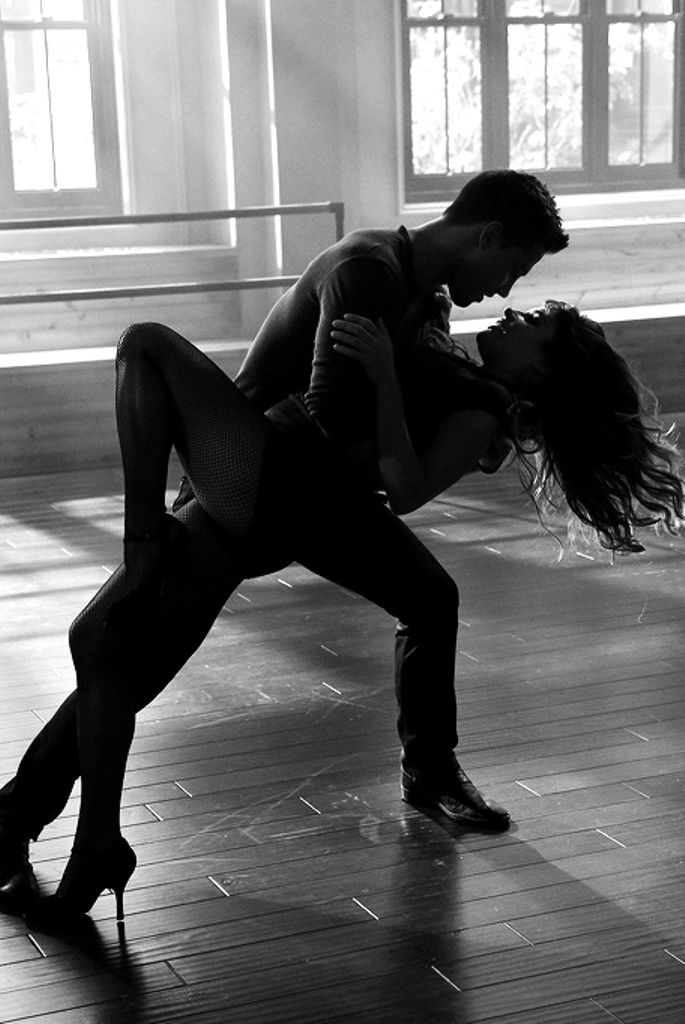 Everyone gave balls - in proportion to their means and capabilities. The ball was a very expensive pleasure for the host. "I gave three balls every year and finally squandered" - says about Onegin's father. But I will not go into financial and economic details. It is more interesting to talk about what happened at the balls. Balls were given all year round, but the season began in late autumn - the time of the greatest concentration of representatives of high society in the urban environment - and continued throughout the winter period, with the exception of periods when it was necessary to fast. Often in one evening I had to attend two or three balls, which required considerable strength from the dancers, besides, many balls ended in the morning, and the next day it was necessary to give visits and prepare for the upcoming amusements. nine0009
Everyone gave balls - in proportion to their means and capabilities. The ball was a very expensive pleasure for the host. "I gave three balls every year and finally squandered" - says about Onegin's father. But I will not go into financial and economic details. It is more interesting to talk about what happened at the balls. Balls were given all year round, but the season began in late autumn - the time of the greatest concentration of representatives of high society in the urban environment - and continued throughout the winter period, with the exception of periods when it was necessary to fast. Often in one evening I had to attend two or three balls, which required considerable strength from the dancers, besides, many balls ended in the morning, and the next day it was necessary to give visits and prepare for the upcoming amusements. nine0009
Any ball began with an invitation. “Sometimes he was still in bed, they carried Pushkin’s notes to him, somewhat inaccurately reflects the situation: invitations to the ball could not be sent on the day of the ball - the addressees had to receive them in three weeks, and make up an answer - whether they would or not. The invitations were very concise, for example: "Prince Potemkin asks to honor him, welcome to the masquerade, this February 8, 1779 at the Anichkov House at 6 o'clock." However, all the rest of the information was superfluous - everyone already knew the other ballroom conventions.0009
The invitations were very concise, for example: "Prince Potemkin asks to honor him, welcome to the masquerade, this February 8, 1779 at the Anichkov House at 6 o'clock." However, all the rest of the information was superfluous - everyone already knew the other ballroom conventions.0009
The routine of the ball was unshakable. Guests began to arrive after six or nine in the evening, some arrived at ten or midnight. After the arrival of the guests, whom the host was supposed to meet, the ball opened with a solemn polonaise, a dance-procession, in which all the guests were supposed to take part, even if they then sat all evening and all night at the card tables. In the second half of the 19th century, the polonaise was sometimes performed at the end of the ball, then the dancing began with the waltz. Then waltzes, polkas, quadrilles, mazurkas alternated. “The mazurka was such a wonderful dance, especially because it brought out those qualities of men and women with which they most attracted each other. Each played his part: the lady rushed forward easily, and the very turn of her head, as she had to look at the gentleman over her raised shoulder, gave her a teasing aura of incomprehensibility, while the whole initiative of the dance remained in the hands of the gentleman. He rushed her forward, either clicking his spurs, or circling her, or falling on one knee and forcing her to dance around him, showing his dexterity and imagination, the ability to show himself and control her will. “The mazurka is the soul of the ball, the goal of lovers, the telegraph of rumors and gossip, almost the announcement of new weddings, the mazurka is two hours calculated by fate to their chosen ones as a pledge of the happiness of a lifetime” One of the final ball dances was the cotillion, "the longest for lovers, like the mazurka" Cotillion, an endless waltz with figures, lasted three hours or more ... " In the middle of the ball there was a dinner, to which each gentleman accompanied the lady. If the gentleman came to the ball without a lady, the hostess of the ball could ask him to escort the lady to the ball (for example, who arrived with a couple of relatives and was therefore not accompanied by a gentleman).
Each played his part: the lady rushed forward easily, and the very turn of her head, as she had to look at the gentleman over her raised shoulder, gave her a teasing aura of incomprehensibility, while the whole initiative of the dance remained in the hands of the gentleman. He rushed her forward, either clicking his spurs, or circling her, or falling on one knee and forcing her to dance around him, showing his dexterity and imagination, the ability to show himself and control her will. “The mazurka is the soul of the ball, the goal of lovers, the telegraph of rumors and gossip, almost the announcement of new weddings, the mazurka is two hours calculated by fate to their chosen ones as a pledge of the happiness of a lifetime” One of the final ball dances was the cotillion, "the longest for lovers, like the mazurka" Cotillion, an endless waltz with figures, lasted three hours or more ... " In the middle of the ball there was a dinner, to which each gentleman accompanied the lady. If the gentleman came to the ball without a lady, the hostess of the ball could ask him to escort the lady to the ball (for example, who arrived with a couple of relatives and was therefore not accompanied by a gentleman).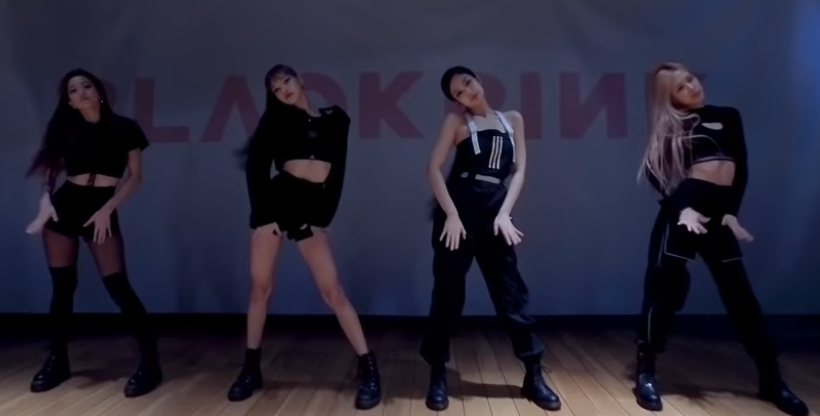 When the couple sat down at the table, they took off their gloves and covered their knees with a napkin. Before getting up from the table, gloves were put on again, napkins were left on the backs of chairs. Then the dancing continued again. The ball usually ended with a many-hour cotillion, at the end of 19centuries, sometimes replaced by a strange dance called the square dance monster.
When the couple sat down at the table, they took off their gloves and covered their knees with a napkin. Before getting up from the table, gloves were put on again, napkins were left on the backs of chairs. Then the dancing continued again. The ball usually ended with a many-hour cotillion, at the end of 19centuries, sometimes replaced by a strange dance called the square dance monster.
The ball was just beginning with the waltz, and other dances followed after it, in particular, the Hungarian, Krakowiak, padepatiner, padespany, padekatre dances ... There was a certain dance order at the balls, and everyone knows what was behind the so-called small dances the first quadrille will go, then, following the schedule, the second, third. After the fourth quadrille and small dances, as a rule, there was a mazurka. This is a special dance. He, like the quadrille, was scheduled for all the ladies in advance, and every gentleman, every lady knew when and with whom they were dancing. It should be noted that among all the dances, the mazurka and cotillion were the most "important" invitations to the ball, for the reason that after the mazurka the gentleman led the lady to the table for dinner, where they could chat, flirt and even confess their love. Everyone had dinner in the side parlors, at small tables. At each table, guests gathered in their own company. In addition, a buffet with various dishes, champagne and other hot and cold drinks was always open at the balls. nine0002 Ball dance program of 1874
It should be noted that among all the dances, the mazurka and cotillion were the most "important" invitations to the ball, for the reason that after the mazurka the gentleman led the lady to the table for dinner, where they could chat, flirt and even confess their love. Everyone had dinner in the side parlors, at small tables. At each table, guests gathered in their own company. In addition, a buffet with various dishes, champagne and other hot and cold drinks was always open at the balls. nine0002 Ball dance program of 1874
Polonaise
Waltz
Polka
Lansie
Galop
Waltz
Frances
Polka
Galop
Lansier
Waltz
Frances
Cotillon ,0002
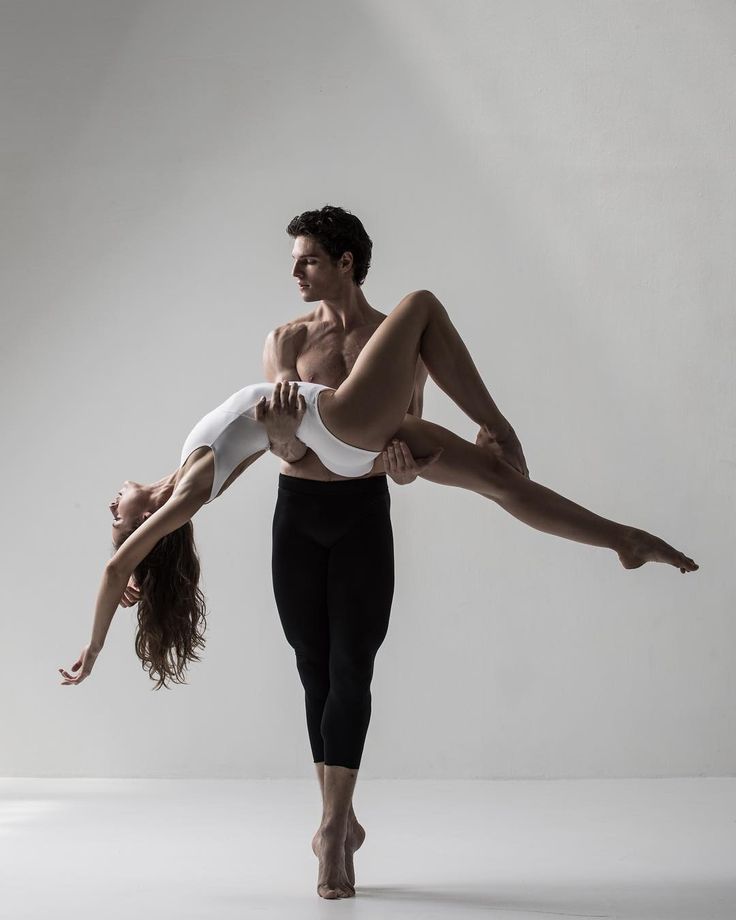 .. After dinner, they always danced the cotillon. Large boxes of flowers were brought to him. Cavaliers sorted bouquets and brought them to their ladies. After all this, the conductor of the ball and his assistants on swords brought in a lot of multi-colored ribbons (balds), as well as narrow and short ribbons with bells at the ends. The gentlemen, having dismantled the ribbons, brought them to their chosen ones, and they put one ribbon over the other over their shoulders. Moreover, men tied short narrow ribbons with bells to the ladies' hands, starting from the wrist to the elbows. “It was, let me tell you, a nice job. You bow to the gentle hand of the lady, to her fragrant body and inhale the aroma of enchanting French perfumes ... "
.. After dinner, they always danced the cotillon. Large boxes of flowers were brought to him. Cavaliers sorted bouquets and brought them to their ladies. After all this, the conductor of the ball and his assistants on swords brought in a lot of multi-colored ribbons (balds), as well as narrow and short ribbons with bells at the ends. The gentlemen, having dismantled the ribbons, brought them to their chosen ones, and they put one ribbon over the other over their shoulders. Moreover, men tied short narrow ribbons with bells to the ladies' hands, starting from the wrist to the elbows. “It was, let me tell you, a nice job. You bow to the gentle hand of the lady, to her fragrant body and inhale the aroma of enchanting French perfumes ... " People came to the ball dressed smartly. Cavaliers - in a tailcoat, tuxedo or suit (depending on the decade), a white shirt and always white gloves. Moreover, in the manuals, the lady has the right to refuse a gentleman without gloves, and for a gentleman it is better to come to the ball in black gloves than without gloves at all. A boutonniere was attached to the lapel of the tailcoat. The military came in uniforms. The costumes of gentlemen depended little on fashion and were recommended to be sewn in classical forms so that the robes would last longer. Cavaliers came to the ball in boots, and only the military could afford boots, but without spurs. nine0009
A boutonniere was attached to the lapel of the tailcoat. The military came in uniforms. The costumes of gentlemen depended little on fashion and were recommended to be sewn in classical forms so that the robes would last longer. Cavaliers came to the ball in boots, and only the military could afford boots, but without spurs. nine0009
Ladies and girls dressed in the latest fashion dresses, each of which was created for 1-2 balls. Ladies could choose any color for the dress (if it was not specifically agreed), for girls dresses were sewn in white or pastel colors - blue, pink, ivory. Gloves were matched to the dress to match the dress or white (it was considered tasteless to wear rings over gloves). Ladies could decorate themselves with a headdress - for example, a beret. The girls were encouraged to have a modest hairstyle. In any case, the neck had to be exposed. Ladies' jewelry could be anything - the main thing is that they are chosen with taste. Girls should appear at balls with a minimum amount of jewelry - a pendant around the neck, a modest bracelet. nine0009
nine0009
The cut of ball gowns depended on fashion, but one thing remained unchanged in it - open neck and shoulders. With such a cut of the dress, neither a lady nor a girl could appear in society without jewelry around the neck - a chain with a pendant, a necklace - something was required to be worn
it was indecent for a lady and a girl to appear in the world without a bouquet of flowers: they carried it in their hands, in their hair, attached to a dress at the waist or on their chest. A fan was an obligatory attribute. It could be left in the ballroom in its place, it was possible to hold it in the left hand (which lies on the partner’s shoulder) during the dance. Little things were put in a bag (reticule), which was also left in its place. nine0009
As a rule, they came to the ball a little late. The host met the first guests, latecomers joined the dancers sometimes even without announcing the persons. At the ball, the ladies took small books with them to write down the sequence of dances; towards the end of the century, these books began to be given out at balls.
In addition to dancing and dinner at the balls, the guests had fun with games: calm, such as cards, cheerful and moving, such as phantoms. They often parted in the morning: "Half-sleepy in bed from the ball, he rides: and restless Petersburg has already been awakened by a drum." nine0009
Within a month after the ball, the guests had to pay a courtesy call to the hosts.
General rules of conduct at the ball and ball etiquette
Invitations to the ball are sent at least 10 days before it starts.
At the height of the season, this period increases to 3 weeks.
In the first 2 days after receiving the invitation, you should inform the organizers of the ball about your decision.
A ball gown should be elegant and refined at the same time, meet the requirements of fashion and be specially tailored for the next ball. nine0002 The color of gems must match the color of the dress.
Pearls and diamonds or rubies and diamonds - for pink fabrics; pearls and diamonds or sapphires and diamonds - to blue fabrics.
Ladies were advised to keep a small bunch of flowers in their hands.
During the ball, neither the ladies nor the gentlemen took off their gloves, except for dinner and playing cards.
A young man, like a girl, accepting an invitation to a ball, at the same time undertakes to dance. In the event of a shortage of gentlemen or ladies, the obligation to dance falls on everyone. To show displeasure or to let it be noticed that you are dancing out of necessity is extremely indecent. On the contrary, he who wants to become the darling of society must indulge in pleasure with all his soul and dance with any partner. nine0009
At the ball, don't forget for a minute that the facial expression should be cheerful and kind. A sad or angry face at a ball is the same as dancing at a wake.
When arriving late to the ball, you must first greet the hosts, and only then start conversations with acquaintances (the latter can be greeted with a nod of the head).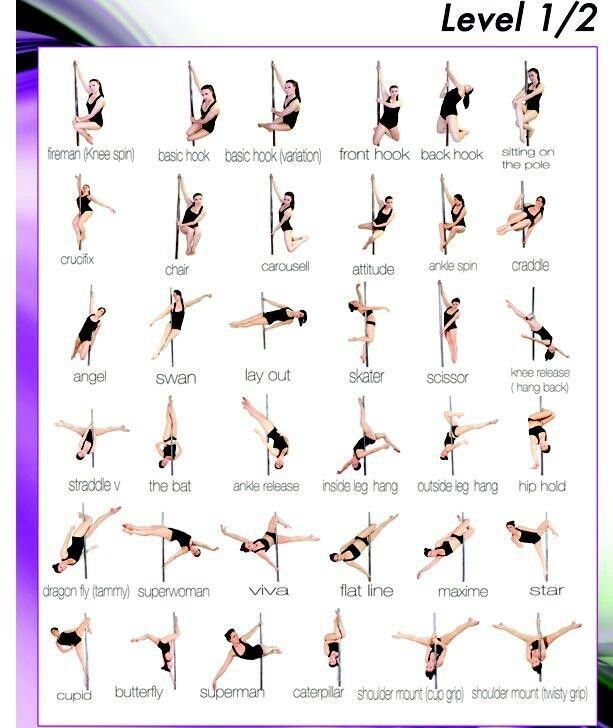
Dances can be invited in advance (including at the ball). However, it is courteous to come to the ball, promising in advance no more than three dances.0009
The head of the dance hall is the manager of the ball. He must be obeyed unquestioningly, not to argue with him and not to make scandals. The steward is responsible for the order in the hall.
Gentlemen must look after the ladies, bring them soft drinks and entertain them in every possible way. Conversations should take place quietly and not touch on complex or serious topics. Any form of humor should be avoided. Cavaliers who take pleasure in causing laughter in their address are to be pitied. nine0009
Disputes between gentlemen must be settled outside the ballroom.
Ladies should not slander, on the contrary, they should behave pleasantly, nicely and kindly. In addition, ladies should avoid any manifestation of bad humor, which may cause disapproval. The main enemy of a lady at a ball is jealousy, which is always noticeable. Ladies should move gently and silently both at home and in society, and leave the impression of the soft steps of a fairy. nine0009
The main enemy of a lady at a ball is jealousy, which is always noticeable. Ladies should move gently and silently both at home and in society, and leave the impression of the soft steps of a fairy. nine0009
Loud laughter, noisy quarrels, rude words, indiscreet looks, in general, everything that is at odds with the laws of beauty should be avoided with special care. The behavior of a lady in relation to a gentleman should always be measured and modest, but ladies should not refuse gentlemen who invited them to dance - a recognition worthy of any attention.
In general, at the ball one should behave modestly, dance gracefully and keep up appearances; jumping, breaking, taking cutesy poses would mean exposing yourself in the eyes of some as an object worthy of ridicule, and in the eyes of others - an object worthy of pity. nine0009
Invitation to dance (engagement)
The gentleman who invites the lady to the dance approaches her and, after bowing gracefully, makes an invitation in the most polite and delicate form: "Let me have the pleasure of inviting you to [dance]" .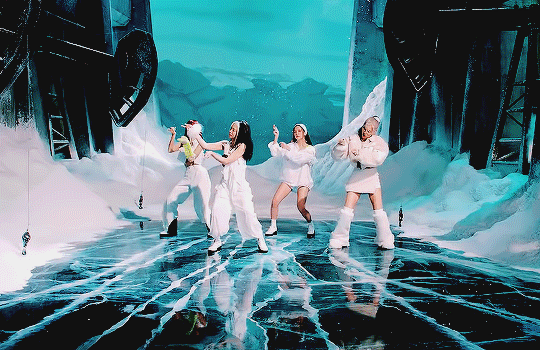 If the invitee is well known to you, then simply: "Do not deny me the pleasure of dancing with you." It is also possible to invite the lady you like by going up to her, bowing and giving your right hand (it is not necessary to say anything). The lady, accepting the invitation, gives the gentleman her left hand. nine0009
If the invitee is well known to you, then simply: "Do not deny me the pleasure of dancing with you." It is also possible to invite the lady you like by going up to her, bowing and giving your right hand (it is not necessary to say anything). The lady, accepting the invitation, gives the gentleman her left hand. nine0009
If it was not the one he wanted to invite that took the gentleman’s bow at his own expense, then a well-bred gentleman in no case shows his disappointment, but observes the rules of decency and blames himself first of all for the awkwardness, but rather gets out of the situation with humor.
It is indecent to invite a lady to whom you are not represented. To do this, it is best to either find a person who agrees to introduce you, or, as a last resort, introduce yourself. nine0009
At the masquerade ball, the mask has the right to invite strangers, the rest can invite only acquaintances.
If the lady is not alone, but in the company of a companion or friends, it is necessary, based on the general norms of behavior, to first apologize for the interrupted conversation, if necessary, ask the companion's consent, and then invite the lady to dance.
The gentleman was recommended to make an invitation in the form of a compliment: "You are so beautiful today that it is a pleasure to admire you. I hope you will give me the happiness of admiring you in a mazurka?" nine0009
It is strongly recommended that when you come to the evening with a lady, dance with her the allowed number of dances (usually - 3). The height of faux pas would be to dance all the time with others. Don't be surprised if by the end of the evening she prefers someone else to walk her home.
However, it is indecent to dance a lot with the same partner. With a partner who is not the bride/groom, you can dance no more than three dances per evening, and you cannot dance two dances in a row. nine0009
When a gentleman invites a lady, she bows her head as a sign of consent, saying: "with pleasure", "good", in case of disagreement, the lady is also allowed to remain silent and respond to the gentleman's invitation only with a gesture, or: promised", or: "I'm already dancing. " But at the same time, the lady can offer the gentleman another dance of her choice or the gentleman's choice. It is unethical and stupid to insist on an invitation or find out the reasons for refusal. It would be wise to bow very politely and walk away without any comment, without expressing your displeasure. nine0009
" But at the same time, the lady can offer the gentleman another dance of her choice or the gentleman's choice. It is unethical and stupid to insist on an invitation or find out the reasons for refusal. It would be wise to bow very politely and walk away without any comment, without expressing your displeasure. nine0009
A dance invitation can be declined if:
- the dance has already been promised;
- the lady has already danced three dances with this gentleman in the evening or the previous dance;
- the lady wants to skip the dance - not to dance, but to rest;
- inviting gentleman without gloves.
In any other case, the lady was obliged to accept the invitation. If she refused for no reason, she was not eligible to participate in this dance at all. nine0009
If a lady accidentally forgot that she gave her word, and while she is going to dance with another gentleman, the first one appears, then she should apologize. To get out of this unpleasant situation, it is best to completely abandon the dance or invite the first gentleman to dance another dance with her.
To get out of this unpleasant situation, it is best to completely abandon the dance or invite the first gentleman to dance another dance with her.
But a gentleman to invite a lady and then forget about it is not only the most unforgivable impoliteness, but simply rudeness; in such a case, he quite rightly incurs the wrath of the lady invited by him and the whole society. nine0009
In a situation where your companion is invited to a dance by your acquaintance, it would be gallant to invite his lady so that she would not be left alone.
Finally, having invited the lady, gallantly escort her to your chosen place in the hall and bow slightly, as the music of many dances will not allow you to do so.
Rules of conduct during the dance
A lady must strictly observe that the gentleman is on her left side, both during dances and walking with her through the hall. Neither ladies nor gentlemen take off their gloves during the ball, and even more so they don’t dance without gloves. nine0009
nine0009
The lady puts her left hand slightly below the man's shoulder. Depending on the fashion, a fan and an elegant handkerchief are held in the same hand, or the handkerchief is hidden, and the fan is hung on a chain, cord or ribbon attached to the belt. The purpose of the fan is to inspire coolness; to hide behind them, so that it would be more convenient to talk and laugh with a gentleman, is indecent. Young, very lively ladies should also notice to themselves that it is not good to lose flowers from their hair or from a dress and pieces of the dress itself and its trimmings. This always indicates unrestrained, abrupt movements and a lack of accuracy and modesty. nine0009
During parade dances (polonaise, minuet) one should only stand behind already standing couples. This rule does not apply to the host of the ball. The optimal distance between pairs is at least a meter. If there is too much steam, it is worth standing aside, forming a different line. If the hall is free, the gentleman should lead the lady to the dance in front of him, but if it's crowded, go ahead himself so that the crampedness does not cause inconvenience to the chosen one. Don't get too close to the dancers, avoid collisions. If a collision occurs, it is worth apologizing and paying attention. It is considered polite to bow to your partner before starting the dance. In general, the dance usually begins with a bow from the gentleman and a return curtsey from the lady. nine0009
Don't get too close to the dancers, avoid collisions. If a collision occurs, it is worth apologizing and paying attention. It is considered polite to bow to your partner before starting the dance. In general, the dance usually begins with a bow from the gentleman and a return curtsey from the lady. nine0009
In the dance, the gentleman leads the lady, and he must take all mistakes personally; if a couple accidentally hit another couple, then the gentleman apologizes, because he is the leader.
During the dance, the gentleman and the lady should not be too far apart, but they should not cling to each other. Dancing with a lady wearing a low-cut dress, the gentleman cannot afford to hold her by her bare shoulders or back.
The dancing cavalier never looks down at his feet, even to make sure that he is doing all the steps correctly. The cavalier should keep straight, with dignity. nine0009
A lady should also dance with her eyes up, only occasionally allowing herself to cast a short glance at the floor. However, no one can forbid a dancing lady to shoot a glance at a gentleman who likes her!
However, no one can forbid a dancing lady to shoot a glance at a gentleman who likes her!
As it is considered indecent to speak incessantly over the ear of your lady during the dance, it would certainly be impolite not to say a few words to her. The conversation between the lady and the gentleman should be extremely kind and pleasant. Talking banalities, discussing other guests of the ball is a bad form. If there is nothing to say during the dance, it is better to remain silent. nine0009
In a dance that has a strict sequence of figures, watch the previous couples, especially the first one, and do nothing before them.
During dances of free movement, for example, the Viennese waltz, do not rush to immediately pair up, first wait for the music and bow to it, since the music here allows it. While dancing, move along with everyone, try not to move, or move along the usual line of dance, in the outer circle. If you are dancing more or less on the spot, or if for some reason you get lost, then it is better to move to the center of the hall, but not outside, and even more so, do not stay on the dance line. nine0009
nine0009
At the end of the dance, the gentleman bows to his lady and accompanies her to the place from where he invited her, or wherever the lady wishes, thanking her along the way for the honor she did by dancing with him in a pair.
All couples, apparently, perform the same movements, but an attentive observer can find in them a lot of features that serve as a true characterization not only of each individual couple, but also of the individual. According to the harmonic movements of a separate pair, which seems to be one, it is often possible to unmistakably conclude that there is sympathy between persons. Graceful, light, as if soaring movements of a young girl are always attractive; over the imperfections of the same movements, they always allow themselves to laugh, without at all taking into account that the cause is often a cavalier. nine0009
Indeed, the task of the latter in dancing is much harder and more important than the ladies. He must be able to dance so well as to be able to cover up his lady's little awkwardness. Therefore, a young man should take care to be able to dance well; then he can be sure that he will not receive a refusal; on the contrary, he will be welcomed everywhere and invited to balls. "Somehow, Princess E.P. Beloselskaya-Belozerskaya violated etiquette. She appeared at the court ball in a purple dress with inappropriate decorations, which immediately drew the attention of those present, it was a kind of challenge to the world. And in the world for two weeks they discussed this gross violation of etiquette." nine0009
Therefore, a young man should take care to be able to dance well; then he can be sure that he will not receive a refusal; on the contrary, he will be welcomed everywhere and invited to balls. "Somehow, Princess E.P. Beloselskaya-Belozerskaya violated etiquette. She appeared at the court ball in a purple dress with inappropriate decorations, which immediately drew the attention of those present, it was a kind of challenge to the world. And in the world for two weeks they discussed this gross violation of etiquette." nine0009
Tags: 19th century, balls, ballroom dance, ballroom etiquette, former St. Petersburg, waltz, ladies' outfits, ladies', painting, mood, gloves, everyday life of the era
Vaslav Nijinsky. God of dance. Waclaw Nizynski
Moscow, April 18, 2019 Three legendary ballets of the Russian Seasons by Sergei Diaghilev in one evening. The audience will see "Vision of a Rose", "Afternoon of a Faun" and "Scheherazade" restored by Andris Liepa.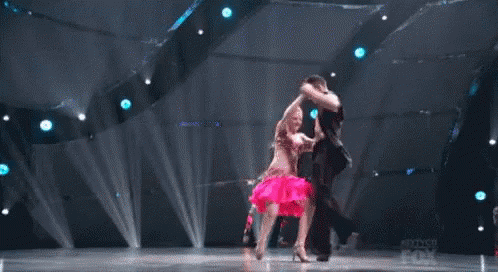 nine0012
nine0012
The world-famous dancer and choreographer PATRICK DE BANA will present for the first time a personal reading of Nijinsky's scandalous masterpiece, The Afternoon of a Faun. This premiere will be a dedication to the genius of the Russian ballet, which marked the beginning of all modern choreography. People's Artist of Russia ILZE LIEPA >>
There are only stars on the Kremlin stage. Premier of the Theater Royal Covent Garden, winner of the award "Best Contemporary Classical Dancer" VADIM MUNTAGIROV and the brilliant DARIA KLIMENTOVA will perform the miniature "Vision of a Rose".
For the first time in Moscow, the ballet of the " ASTANA OPERA " theater, directed by the outstanding ballerina, star of the Mariinsky Theater ALTYNAI ASYLMURATOVA, will present the captivating oriental fairy tale "Scheherazade" with restored scenery and costumes by Lev Bakst.
The part of the Golden Slave will be performed by a young virtuoso, winner of the XIII International Competition of Ballet Dancers and Choreographers in Moscow BAHTIYAR ADAMZHAN . The part of Zobeida is the soloist of the theatre, a refined oriental beauty ANASTASIA ZAKLINSKAYA .
The part of Zobeida is the soloist of the theatre, a refined oriental beauty ANASTASIA ZAKLINSKAYA .
This evening the brightest stars of the world ballet will take to the Kremlin stage!
Participants of the evening:
ANASTASIA ZAKLINSKAYA (Astana Opera)
MARIA ILYUSHKINA Maria (Mariinsky Theatre) >>
ALEXANDRA IOSIFIDI, Honored Artist of Russia (Mariinsky Theatre)
DARIA KLIMENTOVA (English National Ballet L17) ILZEPA 903 Russia
YULIA MAKHALINA, People's Artist of Russia (Mariinsky Theatre)
TATYANA MELNIK (Hungarian State Opera Theatre)
ELEONORA SEVENARD (Bolshoi Theater of Russia)
BAKHTIYAR ADAMZHAN, Honored Worker of Kazakhstan (Astana Opera)
PATRICK DE BANA
MKEYIAN theatre) >>
BROOKLYN MACK (Washington Ballet)
VADIM MUNTAGIROV (Royal Ballet of Great Britain Covent Garden)
PAVEL OKUNEV (MGADM Theater named after N. Sats)
DENIS RODKIN, Honored Artist of Russia (Bolshoi Theater of Russia)
Concert in 2 parts with intermission.
Category 6+
To the 130th anniversary of the birth of Vaslav Nijinsky.
April 18, 2019 at the State Kremlin Palace — grandiose ballet show “VATSLAV NIZHINSKY. GOD OF DANCE" is a dedication to the great dancer and choreographer of the 20th century.
“I have met few geniuses in the world, and one of them was Nijinsky. It enchanted, it was divine, its mysterious gloom seemed to come from other worlds. Each of his movements was poetry, each jump was a flight to the land of fantasy. nine0282
Charlie Chaplin
"I'm scared, I see the greatest actor in the world!"
Sarah Bernard
Conversation with a faun
Choreography by Patrick de Bana based on the choreography by Vaslav Nijinsky.
Patrick de Bana and Ilze Liepa will perform on April 18, 2019 at the State Concert Hall at our evening of the ballet “Vaclav Nijinsky. God of Dance”, dedicated to the 130th anniversary of the great artist, where they will present their conversation with the Faun. . Andris Liepa Production project "Autographs and Images". Film by ATTG STUDIO PRODUCTION Alena Telpukhovskaya Photography collaboration with Alexander Sinyagin, Alena Telpukhovskaya, Tatyana Grudko
. Andris Liepa Production project "Autographs and Images". Film by ATTG STUDIO PRODUCTION Alena Telpukhovskaya Photography collaboration with Alexander Sinyagin, Alena Telpukhovskaya, Tatyana Grudko
Backstage:
Vaclav Nizhinsky:
In life and on stage
A little about Vaclav Nizhinsky
9000 9000 9000 Academy of End of the End of the End of the End of the End of the Premes of the Communist Party - Legendaren Beng. The first international star in the history of ballet. In a tragically short stage career (only 10 years!) he did more than others in a long life.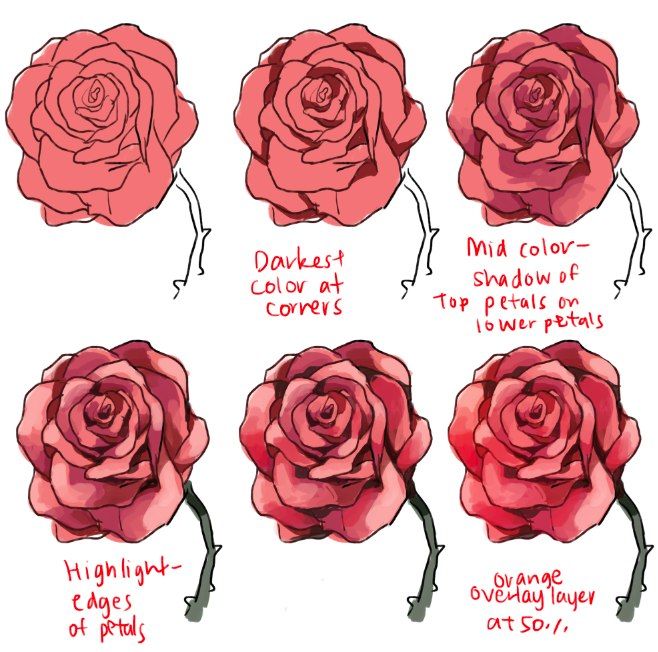
Nijinsky was born on March 12, 1889 in Kyiv into a family of dancers. Pole by birth, Russian by upbringing, he studied at the St. Petersburg Imperial Theater School, was the premier of the Mariinsky Theater, gained worldwide fame. On the stage of the St. Petersburg Mariinsky Theater with a brilliant young man, the best primas sought to dance: the virtuoso Matilda Kshesinskaya, the great Anna Pavlova, the beautiful Tamara Karsavina. Nijinsky had a colossal jump, hung in the air. For flights he was called the "God of Dance", "man-bird", "the eighth wonder of the world." He had the gift of complete reincarnation. For him, the choreographer Mikhail Fokin staged the parts of the romantic Youth in Chopiniana, the exquisite Vision of the Rose in the ballet of the same name, the erotic Golden Slave in Scheherazade, and the tragic Petrushka. These ballets are in the repertoire of the best theaters in the world. At 1909 - 1913 danced the main roles in the best ballets of the legendary Russian Seasons in Paris. A man of great artistic intuition, he created on a whim from above, as if reading divine information.
A man of great artistic intuition, he created on a whim from above, as if reading divine information.
Brilliant classical dancer, at the age of 23, at the height of his fame, staged his first ballet, The Afternoon of a Faun by C. Debussy. In the production, he deliberately abandoned everything that the audience loves (jumps, spins, flights), he was looking for a new laconic dance language. The erotic finale caused a huge scandal in Paris. “Faun is me,” said Nijinsky frankly. The ballet was supported by the great sculptor Auguste Rodin. "Afternoon of a Faun" (1912) is considered to be the first modern ballet of the 20th century. In 1913, Nijinsky staged The Rite of Spring by Igor Stravinsky. In the ballet, glorifying pagan rituals, there was not a single classical step. Primitive dances caused a stormy protest of the performers and spectators - the Parisians. A huge scandal erupted. The innovative production was decades ahead of its time.
Nijinsky was painted and sculpted by the best artists, including Rodin. Numerous photographs of him in roles and in life have been preserved. Not a single film frame of dancing Nijinsky has been found. Books, films, drama and ballet performances are devoted to the tragic life of a brilliant dancer and choreographer. nine0012
Numerous photographs of him in roles and in life have been preserved. Not a single film frame of dancing Nijinsky has been found. Books, films, drama and ballet performances are devoted to the tragic life of a brilliant dancer and choreographer. nine0012
Vaslav Fomich Nijinsky 1889 — 1950
Giselle
Joint video project of La Personne magazine and Andris Liepa production center, inspired by photographs of Vaslav Nijinsky and Tamara Karsavina as Giselle and Count Albert. The heroes of the session were the participants of the upcoming evening - the young artist of the Mariinsky Theater Maria Ilyushkina and soloist of the Mikhailovsky Theater Julian McKay.
This wonderfully atmospheric and romantic behind-the-scenes video was made possible thanks to the support of the project's partner, R-Class. nine0012
Video Alisa Aslanova
Report about the evening on the Russia-Culture TV channel
9.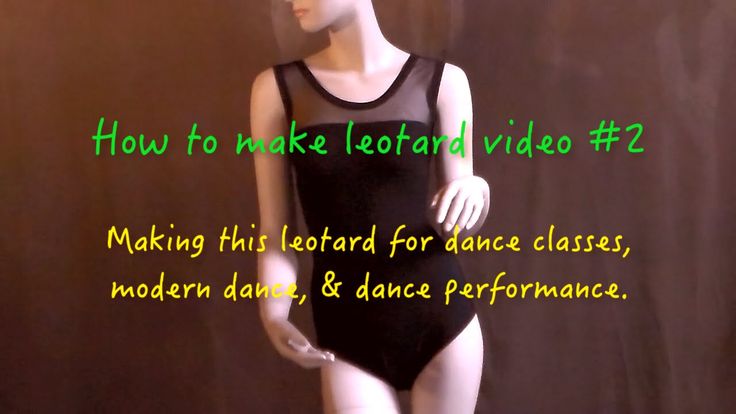 04.2019 | 20:08
04.2019 | 20:08
Concert dedicated to Vaslav Nijinsky presented in the capital Actors from the world's leading theaters presented excerpts from the performances of Diaghilev's "Russian Seasons" from the dancer's repertoire. Reporting - Yana Mira. nine0012
"The God of Dance" is the loud name of the evening dedicated to Vaslav Nijinsky. For the third time Andris Liepa creates a tribute program dedicated to the legends of ballet. Nureyev, Plisetskaya, this time - an offering to the star of the Russian Seasons. This program includes performances in which Nijinsky shone, performed by world ballet stars.
“He lived at the turn of the 19th and 20th centuries, and in fact became the figure who discovered and showed the world the male dance. After Nijinsky made this revolution in the minds, everyone began to understand that ballet does not only belong to the ballerina,” said Andris Liepa, People’s Artist of Russia. nine0012
The leading soloist of the Astana Opera Bakhtiyar Adamzhan is known and loved both at home and in Europe.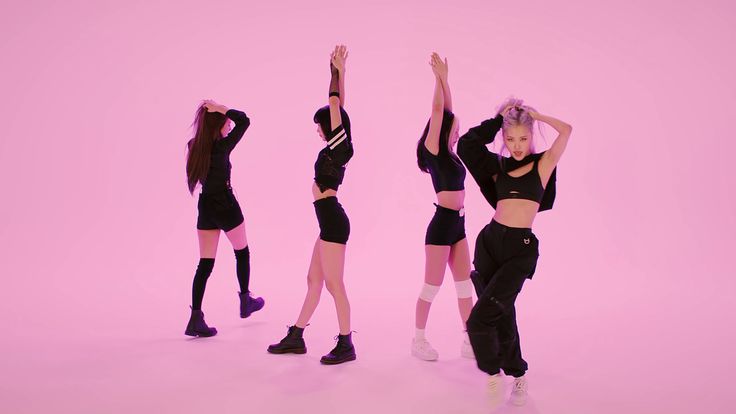 They met Andris Liepa in New York at a ballet competition, where Andris was the chairman of the jury. He gave the young dancer the main award, and then invited him to his projects more than once.
They met Andris Liepa in New York at a ballet competition, where Andris was the chairman of the jury. He gave the young dancer the main award, and then invited him to his projects more than once.
“He taught me a lot about hand styles. Not to mention that musicality. He tamed me a little, because such a dominator crawled out of me, ”shared the leading soloist of the Astana Opera Bakhtiyar Adamzhan. nine0012
In 1994 Andris Liepa staged Scheherazade at the Mariinsky Theatre. The premiere took place in Kazakhstan last December.
This evening in the Kremlin - the world premiere. This is the ballet "Conversation with a Faun" by Patrick de Bahn. The idea is to show that Nijinsky was an absolutely unique artist. There can be no other such thing. Some other blood flowed in his veins.
"A ballet in which there is no ballet" - this is how they said about the work of the choreographer Nijinsky "Afternoon of a Faun". The production of Patrick de Baan's "Conversation with a Faun" is in a difficult relationship with the original source. nine0012
nine0012
“Patrick suggested the idea that I should be the personification of that performance by Nijinsky, and he seemed to look at it all from the side, sometimes turning into a Faun, sometimes being just himself, sometimes turning into Nijinsky,” said the People’s Artist of Russia Ilse Liepa.
“He is the true king of classical dance. He is an absolute legend. And I experience difficult feelings from the fact that I touch the dance that he used to perform. So I decided that I would use small fragments, quotes,” said choreographer Patrick de Bana. nine0012
The program is designed to present the contrasts embodied by Nijinsky as a dancer and a choreographer. How to explain in words what a “genius of dance” is, asks the author of this project Andris Liepa. He found the following formulation: Nijinsky could not just embody any image. He was capable of becoming incorporeal.
Yana Miroy
Photo essay by Elena Pushkina
1st part of the evening of the ballet “Vaclav Nijinsky.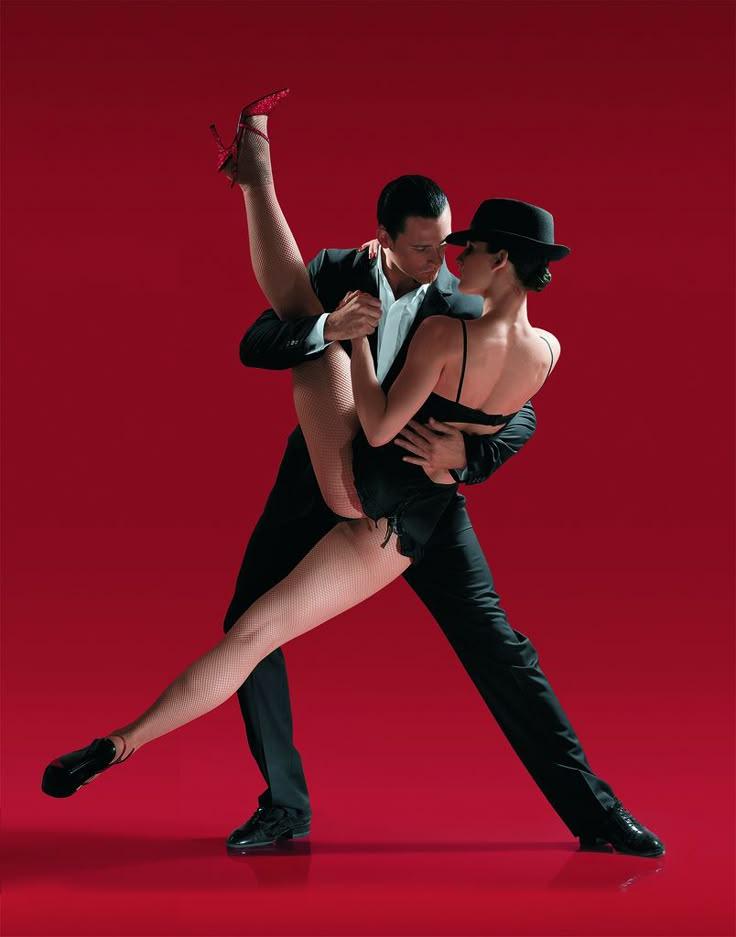 God of Dance»
God of Dance»
Photos by Elena Pushkina, @pushkina_elena
Photo report by Elena Pushkina.
One-act ballet "Scheherazade"
2nd part of the evening of the ballet "Vaclav Nijinsky. God of Dance"
Ballet of the State Opera and Ballet Theater "Astana Opera" under the direction of People's Artist of the Russian Federation ALTYNAI ASYLMURATOVA.
Stage director Andris Liepa.
Golden Slave - BAKHTIYAR ADAMZHAN, Zobeida - ANASTASIA ZAKLINSKAYA
Photos of Elena Pushkina, @pushkina_elena
Photo report by Nicholas McKay / Nicholas Mackay
Photos Fragment from the ballet "Petrushka" - Petrushka's room. Pavel Okunev (artist of MGADM Theater named after N. Performance by Andris Liepa
 Sats)
Sats)
One-act ballet “Vision of the Rose”
K. M. von Weber
Choreography by Mikhail Fokin
Daria Klimentova / Daria Klimentova (English National Ballet)
Vadim012 Muntagirov (Royal Ballet of Great Britain Covent Garden)
Pa-de-de-de from the ballet "Sleeping beauty"
P. Tchaikovsky
Choreography M. Petipa
Eleanor Sevenard (Bolshoi Theater)
Denis Rodkin (Bolshoi Theater)
9000 18 April 2019Conversation with a Faun
Claude Debussy
Choreography by Patrick de Bana based on choreography by Vaslav Nijinsky
Ilze Liepa
Patrick de Barina / Patrick de Bana
April 18, 2019
The concert was prepared by
Director: People's Artist of Russia Andris Liepa
Sound
DRITIRS Vadim Bulikov
Video content: Alexander Fedorko, Event Group One More
PROJECT ORGANIZER
ANDRIS LIEPA PRODUCTION CENTER AL PRODUCTION
CEO: Natalya Ivanova
Project manager: Julia Tokareva
PR Project: Information Partnership "Bedesh & Marennikova"
Design: Natalya Konyukova
Partners of the Evening
9000 9000 9000 9000 9000 9000 900
SOLO is a Russian manufacturer of dancewear
Pas de deux from Giselle
Choreography by J. Koralli, J. Perro, M. Petipa
Maria Ilyushkina (Mariinsky Theater)
Julian McKay / Julian Mackay (Mikhailovsky Theater)
April 18, 2019